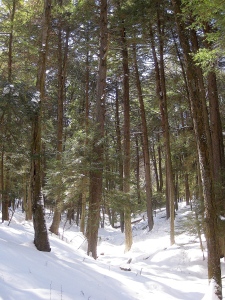As some of you have noticed, I’ve not been posting quite as frequently as I once did.
And there’s a good reason for that…
No… I didn’t get bored with Wild Foodism. I didn’t abandon the blogosphere, and I certainly didn’t renounce the forager’s lifestyle.
In June, I launched Learn Your Land — an online community and database of naturalists, foraging events, wildflower hikes, mushroom forays, bird walks, and more.
How does it work?
Simple. You choose your area of interest (say, Western Pennsylvania), followed by your topic of interest (say, foraging). A map will appear, displaying all the naturalists and events pertaining to foraging in Western Pennsylvania.
Other topics of interest include birds, plants, mushrooms, animals, and insects.
As of now, coverage includes Pennsylvania, with plans to eventually cover the entire United States… and beyond (well, maybe not Jupiter… but Canada, Europe, etc.).
Don’t live in Pennsylvania? It’s all good. You can still find my writing over at the Learn Your Land blog. Think of it as an extension of Wild Foodism. If you ever found any value here, it is my hope that you will find interest in the writing over there as well.
Anyway, if you’d like to stay up to date with Learn Your Land, as well as whatever additional shenanigans I’ve been getting into, I have an easy way for you to do that.
You can join the Learn Your Land community!
It’s really easy to do:
- Go to www.learnyourland.com
- Click the “Join” button at the top
- Fill out the info, and when you get to “I am a…”, click “Subscriber.”
That’s it! Very quick and easy. You will now receive (occasional) updates on new posts, events, and other fun things.
If you have any questions regarding the process, you can find my email address on the Contact page.
Thanks so much for all your support the past few years! I will continue to create content that I hope you will find informative, interesting, entertaining, and most importantly… relevant.
Please check out LearnYourLand.com… that’s where I’ll be!
I hope to see you there!
-Adam Haritan
Links:







